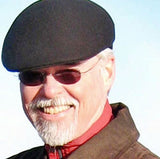The US Marine Corps Has Maintained Its Own Private Herd of American Bison Since 1973
Dan Doyle
Native Americans prior to European arrival depended on the vast buffalo herds that existed here on this continent until the middle and late 19th century. Those herds were wiped out over the course of the 19th century by both the U.S. Army and civilian hunters. The former took those measures during the “Indian Wars” to deny the Indians of the plains their principal source of food, clothing, and tools and to demoralize them by taking away this sacred resource.
There were also organized civilian hunting parties that simply shot the animals for their heads as trophies, leaving the slaughtered buffaloes' bodies to rot under the sun. These policies would eventually end the free, independent, and self-sufficient lifestyles of the plains tribes and almost brought to extinction the American bison that once covered the plains in the millions. All of this was done over a handful of decades in the 19th century.
Two kinds of buffalo roamed this continent in the millions, woodland buffalo and the more familiar plains buffalo, or American bison. The former ranged throughout the Eastern woodlands. But the buffalo that we are most familiar with ranged over the entire central plains of the North American continent, from central Canada to Mexico. They provided hundreds of Native American tribes with almost every one of their daily needs. The skins provided the materials for making things like teepee coverings and clothing items from head to foot and a wide variety of tools. The bison was the principal food source for the tribes as well. In other words, every part of the animal was used for some practical and necessary purpose. Many Native American cultures developed nomadic lifestyles, following the buffalo throughout the seasons. Their every need was cared for by those magnificent animals.
By the late 1800s, the buffalo had been decimated to the point of extinction. Their numbers had been reduced from an estimated 30 million animals to just a few hundred. The plains tribes no longer had this important and sacred resource to depend on, and the loss of these magnificent animals, even more than the American military efforts against them, sealed their fate. They would eventually be confined to reservations and dependent on the U.S. government for food and clothing. They had to adapt to settled lifestyles and farming. Their old ways, their former sense of dignity, and their faith were changed forever, because of the loss of this sacred animal.
I have just finished reading a book, Plenty-coups: Chief of the Crows, and have had this relationship between the plains Indians and the buffalo in my mind. Plenty-coups, who had fought as a scout for Custer at the Battle of the Little Bighorn, died in the 1930s and was the last war chief of the Crow, or Absarokee Tribe. In an interview with the author of the book toward the end of his life, he said, “But when the buffalo went away, the hearts of the people fell to the ground, and they could not lift them up again.” The buffalo still remains an important part of the tribal memories and the identity of the peoples of the many plains tribes.
In running across an article on the Military Times website, I was truly surprised to read about the fact that there is a private herd of buffalo, American bison, maintained by the United States Marine Corps at Camp Pendleton. Over most of the 20th century, efforts were made to bring the buffalo back from the brink of extinction by the farming and ranching of herds of buffalo. That and the extension of federal protection has helped to accomplish that desire.
One of those private herds has enjoyed the protection of the United States Marine Corps since 1973. The Marine Corps manages one of the two protected herds of American bison in California. The other is on Catalina Island. The Marine Corps herd roams the Delta and Charlie training areas, and the Zulu Impact Area and the Case Springs areas are off-limits to the general public on the sprawling 125,000-acre Marine Corps base at Camp Pendleton. These areas of the base provide plenty of grazing space and two water sources for the herd.
This protected herd has thrived on the base and has grown so much that, at times, they interfere with basic training and other base operations. The herd has grown from 50 animals to around 90 today. The Camp Pendleton Game Warden’s Office manages the herd. It is charged with “monitoring the bison population and keeping track of its genetic diversity, overall health, and total population.” It allows the bison to roam free and keeps the herd from Marine Corps training exercises as much as possible. This is not always that easy.
As long as I have known Marines, I have never heard about this buffalo herd kept on the Marine Corps Base at Camp Pendleton. Maybe that is because the Warden’s Office has done a good job of keeping them out of sight and out of mind.
Who would have imagined that the Marine Corps has its own herd of buffalo? But it is a fact, and we are glad that there is a growing herd of pure American Bison being managed, protected, and preserved on the lands of Camp Pendleton. OooRah!






